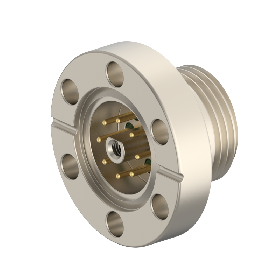In the vacuum system, the materials used for movable connection and plugging include vacuum sealing grease (grease), sealing wax, sealing mud and adhesive.
①Vacuum sealing grease (ointment) is used for movable frosted joints, such as the sealing of valves, grinding mouths, etc. The main requirements for this type of sealing material are low vapor pressure (<10-4Pa) and proper viscosity. There are mainly the following two types of ointments:
a. Mixtures of heavy hydrocarbons, such as vacuum ointment and apiezon ointment.
b. Silicone organic compounds, such as silicone grease, have the advantage of good temperature stability and proper viscosity in the temperature range of -40~200℃.
②Vacuum sealing grease (black paste) is used for non-welding or temporary semi-fixed connection and high vacuum leak plugging. It is solid at room temperature and needs to be heated to soften when used (softening temperature 50~100℃).
③Vacuum sealing grease (rubber mud) is used as a temporary connection or plugging. It can be plastically deformed at room temperature, its sealing performance is slightly poor, and its saturated vapor pressure is high (≈10-2Pa), and it can generally only be used for low vacuum.
Due to the relatively large vapor pressure and outgassing rate of the ointment, it is not suitable for use in ultra-high vacuum valves. In this case, valves of low melting point liquid metals or alloys can be used. This kind of low melting point metal or alloy mainly uses mercury and alloys mainly composed of gallium, indium and tin. The preparation method of liquid alloy is as follows:
a. Indium alloy, the proportion is 49% bismuth, 12% tin, 18% lead, 21% indium, and the melting point is 57.8°C. Prepare the raw materials according to the above ratio, put them into a crucible containing molten paraffin (paraffin can protect the indium alloy from being oxidized in the molten state), heat to 300°C (to prevent paraffin from catching fire), and stir with a glass rod to melt the raw materials. Mix uniformly and obtain a solidified indium alloy after fully cooling. Wash the paraffin on the surface with benzene and ether to obtain a clean indium alloy.
b. Gallium indium tin alloy, the proportion is 62% gallium, 25% indium, 13% tin, and the melting point is 5°C; there is also a melting point of 10.7°C, the proportion is 62.5% gallium, 21.5% indium, and 16% tin. Prepare the raw materials according to the above ratio, put them into the glass tube and evacuate to 10-1Pa, and after heating and melting, it will become a uniform gallium indium tin alloy. It is a liquid at room temperature, and it is fully cooled to a solid when stored. For some impurities on the surface of the liquid alloy, a needle-shaped pipette can be used to suck clean liquid alloy from under the impurities. Use a sodium hydroxide solution with a concentration of 2% to 5% to recover the liquid alloy adhering to the glass tube.
(huiputech)

Z-S-CF16-0810S,Z-S-CF16-0810M,Z-S-CF16-0810L
2025-11-04
Contact : Martin
Tel : +86 18588203671
Mobile : +86 18588203671
Fax : +86 18588203671
Email : Martin@huiputech.com
Address : 3/F, Building F, GLORY Technology Park, No.2 Baolong 5th Road, Longgang District, Shenzhen, Guangdong, China.